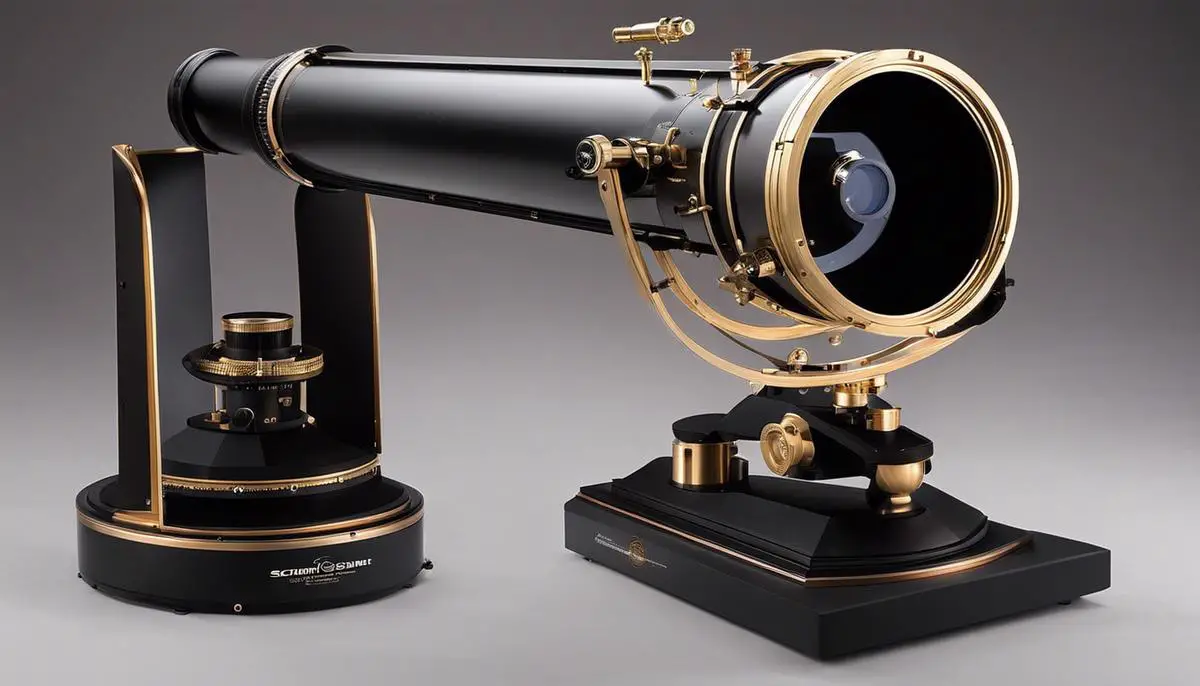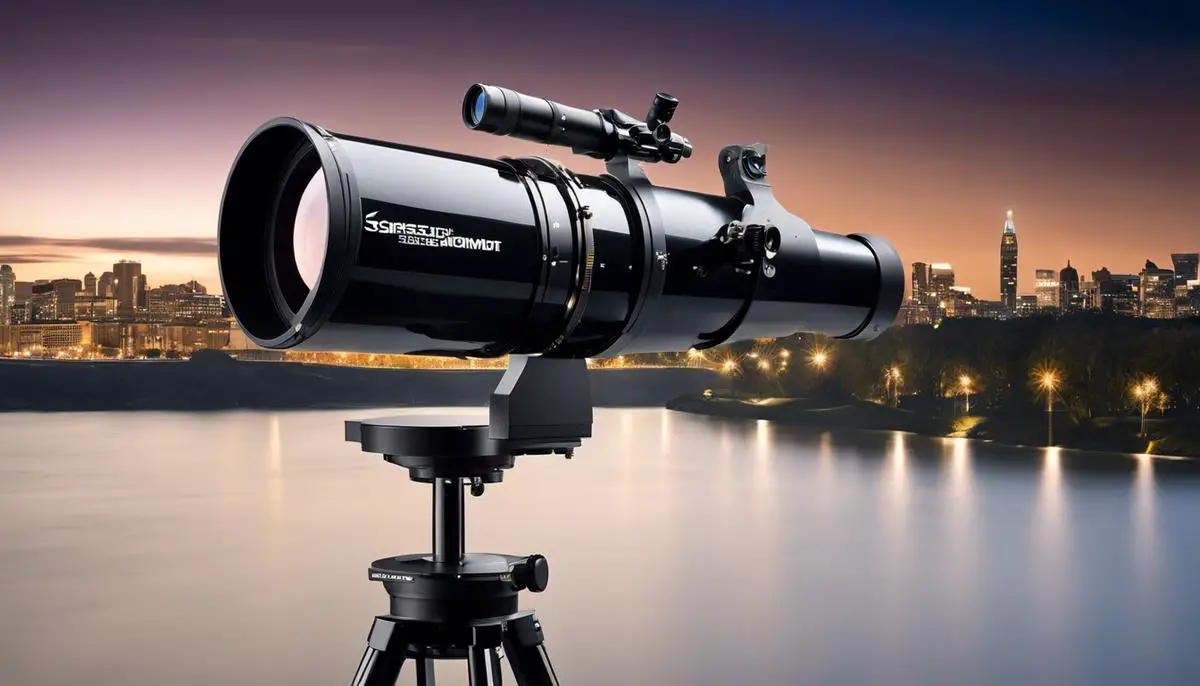Urban astronomers face a unique set of challenges in their stargazing endeavors, not least of which is the pervasive glow of city lights that veil the night sky’s natural wonders. However, modern telescope technology extends a silver lining to these starry-eyed city residents. As a guide to navigating the celestial views from metropolitan vantages, we delve into the sophisticated world of Schmidt-Cassegrain and Maksutov-Cassegrain telescopes. These instruments are not only beacons of hope for those yearning to observe the cosmos from within the urban jungle but also embody the pinnacle of convenient and effective astronomical observation for the space enthusiast constrained by city life.
Schmidt-Cassegrain Telescopes for Urban Stargazers
Schmidt-Cassegrain telescopes (SCTs) represent an exemplary fusion of technical finesse and practical design in observational astronomy, particularly well-suited to the unique challenges encountered by city-based astronomers. These instruments employ a catadioptric system, blending the principles of both refraction and reflection, to create an optically robust and compact tool. Below are key attributes demonstrating the versatility and power of Schmidt-Cassegrain telescopes in urban settings.
Compact and Portable:
- SCTs boast a closed-tube design that is inherently more compact than their Newtonian or refractor counterparts of similar aperture. This attribute is especially critical for city-based astronomers who frequently face spatial constraints and the necessity for transportation to darker sites.
Reduced Effects of Light Pollution:
- The SCT design incorporates a central obstruction – the secondary mirror – which inadvertently aids in somewhat mitigating the effects of urban light pollution. The contrast loss due to the secondary is, counterintuitively, beneficial in a compromised light profile since it can help to increase the relative visibility of celestial objects.
High Magnification Potential:
- SCTs offer high focal ratios – typically f/10 or higher – which enable significant magnification with the appropriate eyepieces. Given that many deep-sky objects are visible even in light-polluted skies when viewed at higher magnifications, SCTs provide the power necessary to bring distant galaxies and nebulae within the observer’s reach.
Versatile Optical Performance:
- Characterized by their adaptability, SCTs deliver respectable wide-field views when coupled with a focal reducer, and yet, with the addition of a Barlow lens, they can achieve the high magnification needed for planetary and lunar observation. This flexibility is particularly beneficial in urban environments where targeting a range of celestial objects is advantageous for circumventing areas of the sky blighted by excessive artificial light.
Adaptable for Astrophotography:
- For the urban-based astronomer with an astrophotographic inclination, SCTs provide a firm foundation upon which to build. Their stable mounts, ability to attain accurate polar alignment, and threaded rear cells for attachment of cameras and other accessories make them an outstanding choice for capturing celestial images in less-than-ideal conditions.
Ease of Equatorial Mounting:
- Critical for astronomers contending with the Earth’s rotation, particularly during long-exposure astrophotography, SCTs are routinely compatible with equatorial mounts. These mounts facilitate the tracking of celestial objects across the sky with precision, a feat more challenging to achieve with other types of telescope mounts.
In conclusion, the Schmidt-Cassegrain telescope’s compact size, ability to lessen the impact of light pollution, and versatility in observation and astrophotography present a formidable array of advantages for astronomers operating within the urban environment. Its sophisticated catadioptric system ensures arresting views of the cosmos against the adversities posed by city skies.

Maksutov-Cassegrain Telescopes for Limited Spaces
Robustness Against Thermal Variability:
Maksutov-Cassegrain telescopes are noteworthy for their robustness against thermal variations that often plague observational conditions in urban environments. The sealed construction of these telescopes, along with their meniscus corrector lens, minimizes the ingress of warm air and contaminants. This quality ensures that the optical system reaches thermal equilibrium more rapidly than other telescope types with open tubes, thereby offering a more stable image quality throughout the observational session.
Exceptional Contrast and Resolution:
A significant advantage of Maksutov-Cassegrain telescopes is their inherent ability to produce images with exceptional contrast and resolution. The optical design that features a thick meniscus corrector lens minimizes the occurrence of spherical aberration and yields a sharp, high-contrast image that is particularly beneficial when observing planets and double stars. In the tumultuous light environment of cities, this high contrast is invaluable for discerning celestial objects against the backlit canvas of the urban night sky.
Long Focal Length, Compact Form Factor:
One attribute that cannot be overstressed is the long focal length that these telescopes provide while maintaining a compact form factor. The folded optical path inherent in the Maksutov-Cassegrain design allows for high focal ratios, making these telescopes superb for detailed lunar and planetary observation despite the confined space of urban settings. The ability to harness magnifications needed for such detailed observations within such a small physical footprint is uniquely fitting for astronomers who may have limited space.
Minimal Maintenance Needs:
The secure, closed-tube design of Maksutov-Cassegrain telescopes ensures that the optics require less cleaning and realignment compared to open-tube telescopes, which can be easily exposed to the elements and urban pollutants. The frequency of maintenance can significantly affect an astronomer’s active observation schedule, especially in urban environments where dust and particulate matter are prevalent. The reduced maintenance overhead contributes to the reliability and effectiveness of Maksutov-Cassegrain telescopes as a tool for consistent observation.
Inherent Dew Resistance:
Urban astronomers regularly confront issues of dew formation, particularly when juxtaposed with the heat island effect prevalent in cities. The corrector plate in Maksutov-Cassegrain telescopes is less susceptible to dew accumulation due to its smaller exposed surface area and the thermal properties of the glass. This is a beneficial attribute, considering that dew can rapidly derail an observational session and demand additional equipment to mitigate its formation on lens surfaces.
Simplicity of Use:
Amid the intricate skylines and the ever-present distractions of city life, simplicity becomes a cornerstone for any adept urban telescope. Maksutov-Cassegrain telescopes often work ‘straight out of the box’, without the need for the complex collimation procedures that are necessary for other telescope types. This aspect ensures that urban astronomers can maximize their limited observation windows, with rapid deployment and utilization of their instrument being a crucial enabler for their observational endeavors.
Taken in aggregate, the characteristics of Maksutov-Cassegrain telescopes coalesce to form a versatile and powerful observational instrument eminently suited for the urban astronomer. The blend of compactness, high magnification, and sophisticated optical performance, alongside simplified operation and reduced maintenance, unmistakably favors this telescope design for the rigors of city-based astronomical pursuits.

For the metropolitan astronomer, the selection of the right telescope is crucial for unlocking the wonders of the cosmos against the backdrop of urban light pollution. Schmidt-Cassegrain and Maksutov-Cassegrain telescopes emerge as the befitting envoys of the night sky, adeptly marrying compact, innovative design with powerful optical capabilities. These telescopic sentinels stand as testaments to the avidity with which humanity seeks to glimpse the celestial realm, dwarfing the artificial luminance of city life. With either choice, the urban astronomer is equipped not just with a tool, but with a key to the boundless observatory that awaits above our heads—a sanctuary where the cosmic spectacle unfolds for those who choose to look upward and beyond.
![]()
